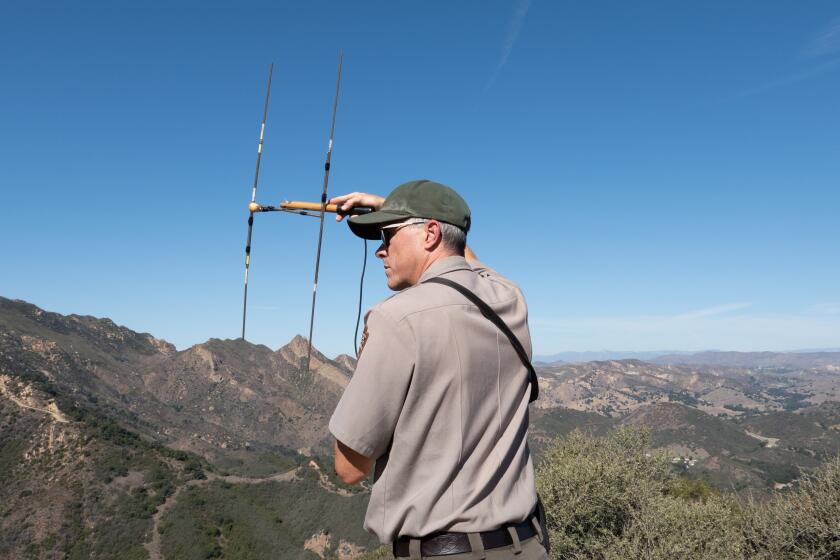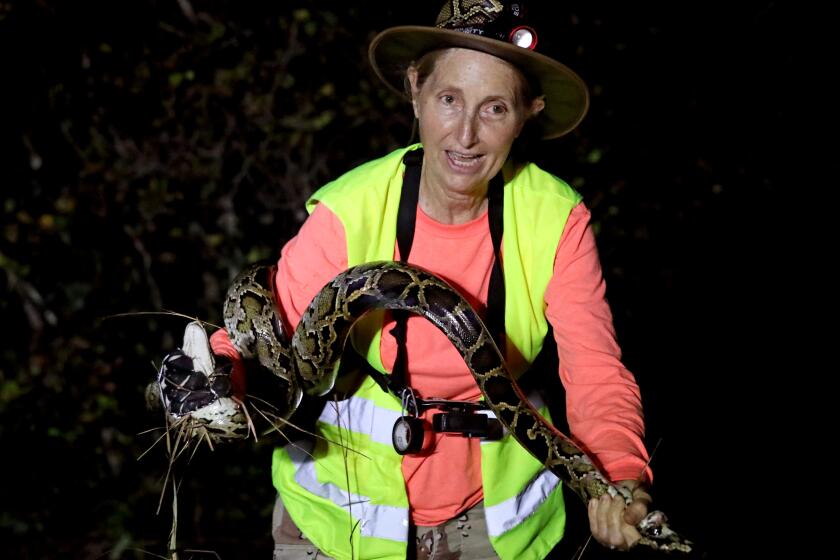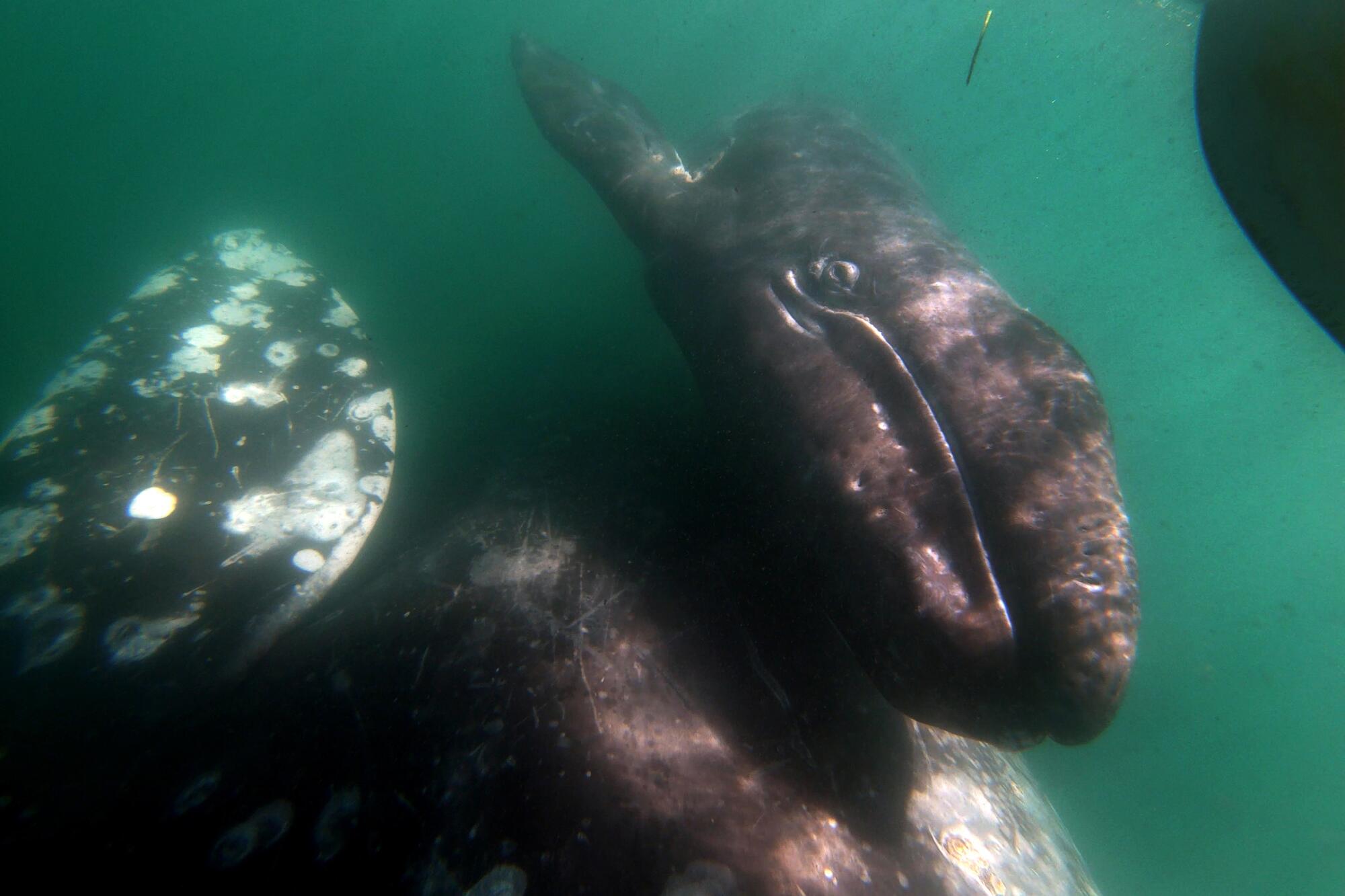
- Share via
A deadly new threat may be on the horizon for gray whales — a species already suffering from a mysterious decline in population.
For the first time in known history, orcas have been observed in the grays’ Mexican refuge: the warm, shallow lagoons of the Baja Peninsula, where the 40-plus-foot leviathans go to calf, nurse and mate in peace. Until now, conservationists had considered the area a shelter from shipping, fishing gear, and killer whales — the ocean’s apex predator.
According to reports from researchers and local fishermen, Laguna San Ignacio has been visited twice this year by orcas.
One pod showed up in January and was videotaped fatally attacking two resident bottle-nosed dolphins. They may have also killed a gray whale calf, although a body was never found.
Cindy Hansen, educator and advocacy coordinator for Orca Network, a Freeland, Wash.-based nonprofit, said a piece of skin and blubber were found, “but there was no genetics done to be able to get a positive ID.”
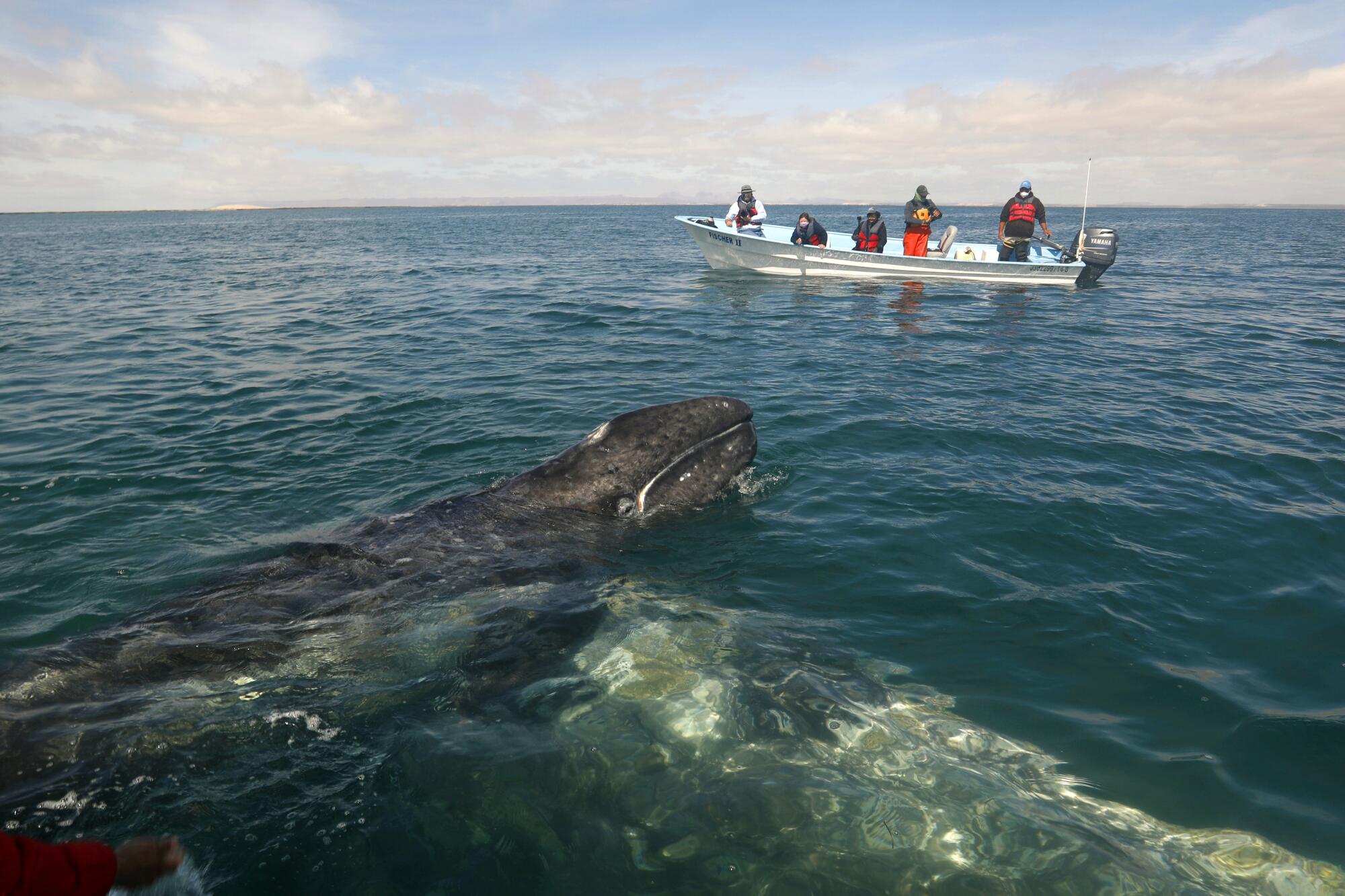
Last week, another pod of orcas swam into the lagoon. This time, there were no gray whales — most were either in the Arctic where they spend their summers gorging on small shrimp-like crustaceans that they scoop up off the ocean floor, or just starting their southward migration down the North American coastline. Gray whales usually inhabit the lagoon starting in late January and leave by mid-March or April.
It is not clear whether the same pod of orcas ventured there twice. While researchers were able to photograph and identify each of the killer whales in January, a research team was not present to photograph the intrusion last week, said Steven Swartz, a primary researcher with the Laguna San Ignacio Ecosystem Science Project.
“Orcas are part of the normal fauna down there,” said Swartz, who is based in Maryland when not studying whales in Baja. “They are offshore up and down the Baja coast and in the Gulf of California, so they are not strangers to the area. What was odd is that we’ve never had any bona fide, verified real-time sightings inside the gray whale breeding lagoons.”
He said that while no killer whale had ever been documented in the lagoon previously — going back to whaling records from the mid-1800s, when San Francisco-based hunter Charles Melville Scammon slaughtered thousands of gray whales with his crew — it wasn’t surprising that these social and intelligent animals would find it.
As mountain lions seek to avoid wildfire zones, their risks of being hit by automobiles or entering deadly conflicts with other pumas are increasing.
“This is the second time we know of, though they may have come in more frequently but we never saw them,” he said. “Maybe they came in at night. We don’t know. Now whether these guys are just coming in to take a look around and then they’ll leave or come back later, we don’t know.”
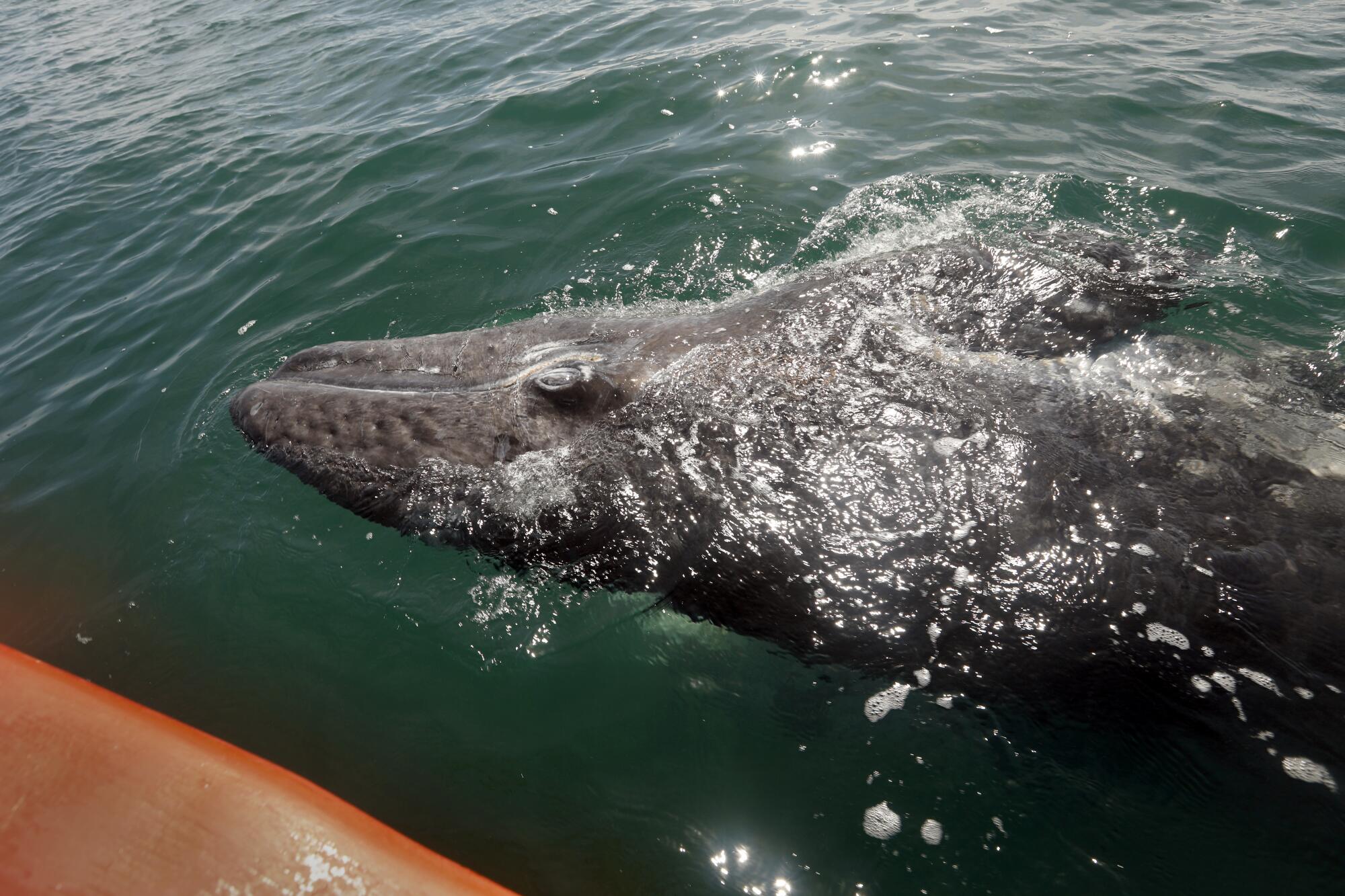
Earlier this month, the National Oceanic and Atmospheric Administration reported that the number of gray whales living along the Eastern North Pacific was down almost 40% from its peak in 2016. In addition, the number of calves born last year was the lowest seen since the agency started taking records.
“You know, every calf counts,” Swartz said. “As the population is trying to recover ... and calf counts are down and reproduction rates are down, this could be cause for concern. If the orcas come in during the whale season and target gray whale calves, yeah, that’s one more strike against recovery of the population.”
In 2019, the NOAA declared an “unusual mortality event” after an alarming number of gray whales began washing up along the shore from Mexico to Alaska. Then and now, the cause of the die-off remains elusive, but it appears that something has drastically altered the food web of these bottom-feeding cetaceans.
Every year, hunters descend on the Everglades to kill Burmese pythons. Two women are among the eradicators.
Every year, gray whales migrate from the warm, protected lagoons of Mexico’s Baja Peninsula to the cold waters of the Arctic and sub-Arctic. Then they return to Mexico, where they mate, give birth and nurse their calves.
It’s a 12,000-mile round trip migration that leads the whales past North America’s busy coastline — through shipping lanes, around fishing vessels, near crowded and intrusive tourist boats and occasionally into the maws of hungry orcas.
“Killer whales have to make a living too,” Swartz said. “There’s obviously concern for the gray whales because they are the regional charismatic megafauna with people coming from all points to see the gray whale. But we care about the other wildlife too.”
As to why the orcas are suddenly showing up, neither Swartz nor Hansen seemed to have an answer; “happenstance” seemed to be the most likely driver, Swartz said.
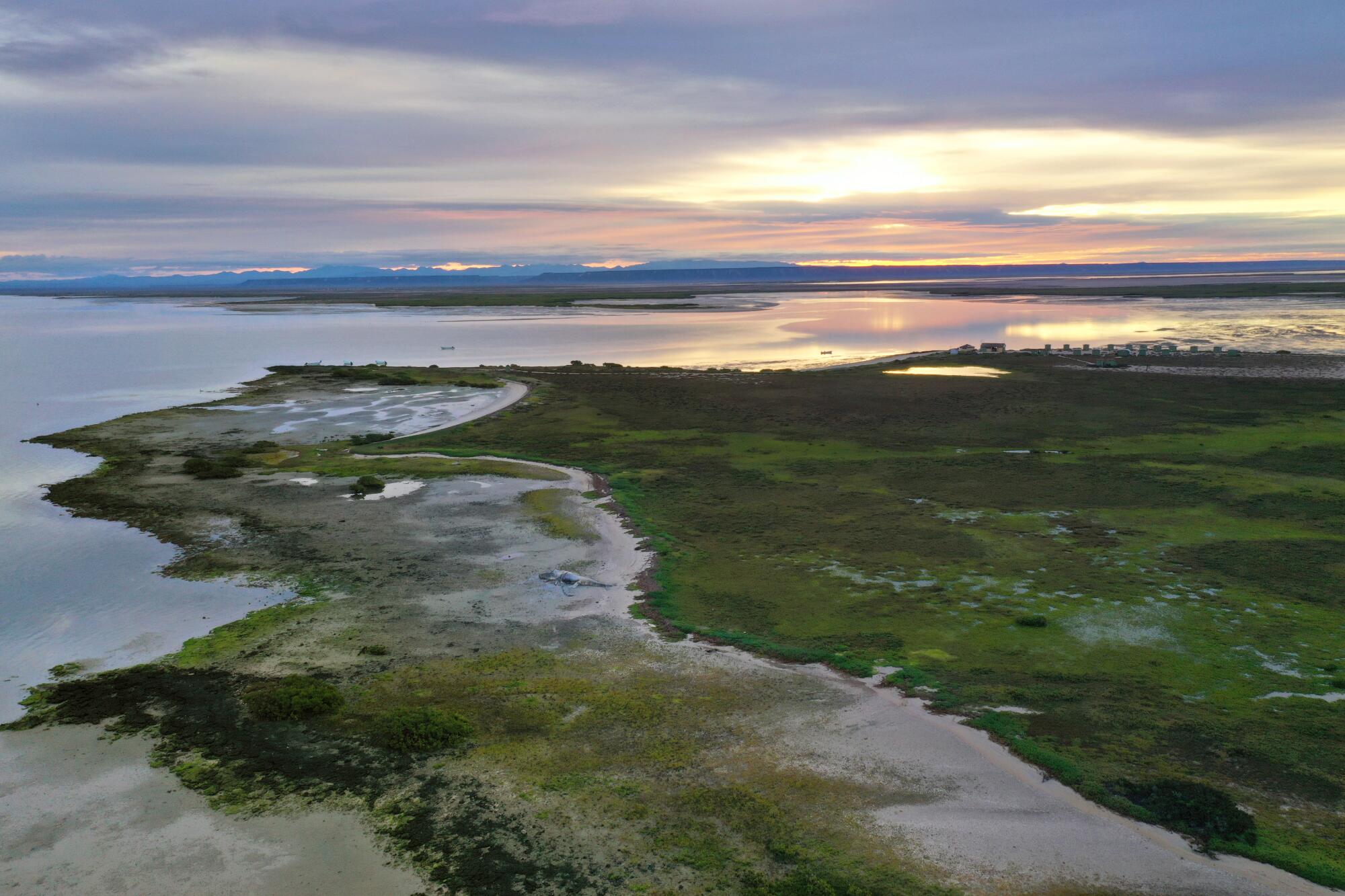
However, both the behavior of gray whales and the shallowness of the lagoon may prevent orcas from doing too much damage to the gray whales, should they return while the giants are present.
“Gray whales can be extremely defensive, aggressive — especially if it’s a female and her calf is threatened,” he said, noting that killer whales hunt in packs, like wolves. “Except in their world they have three dimensions. So they need relatively deep water to go after large prey.”
Gerardo Freer, a caretaker at Antonio’s EcoTours in Laguna San Ignacio, said he thinks the killer whales are targeting a colony of sea lions that live on an island deep within the lagoon.
“We’ll see if the pod of orcas returns when the grays are here,” he said.
